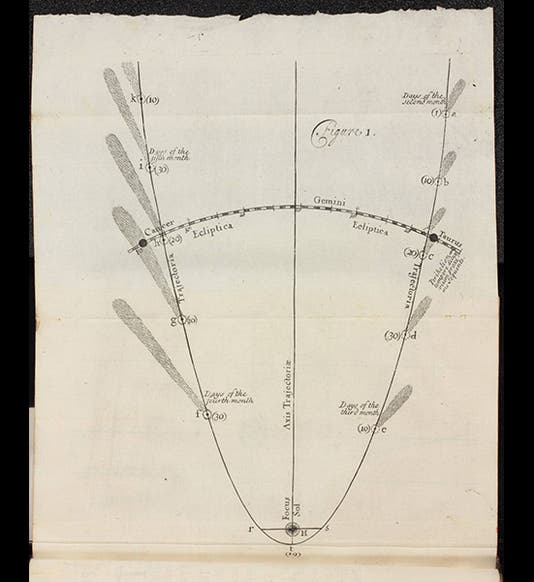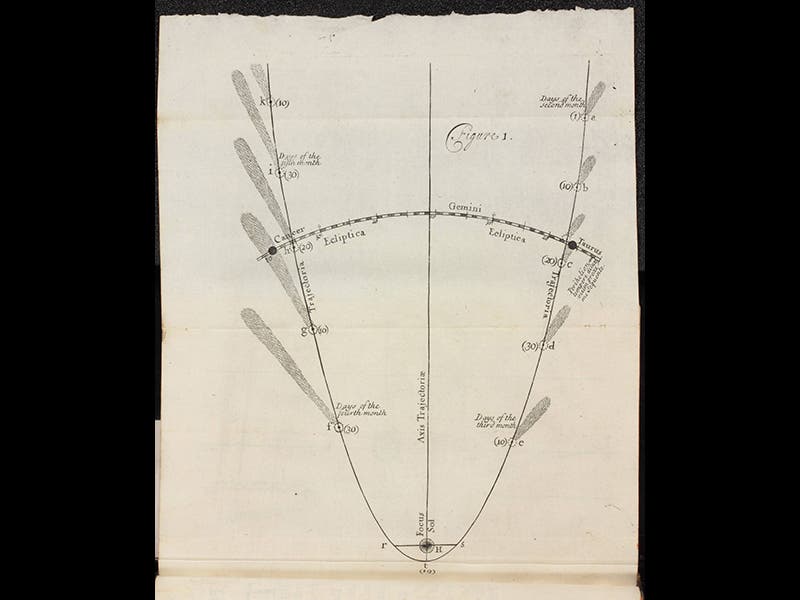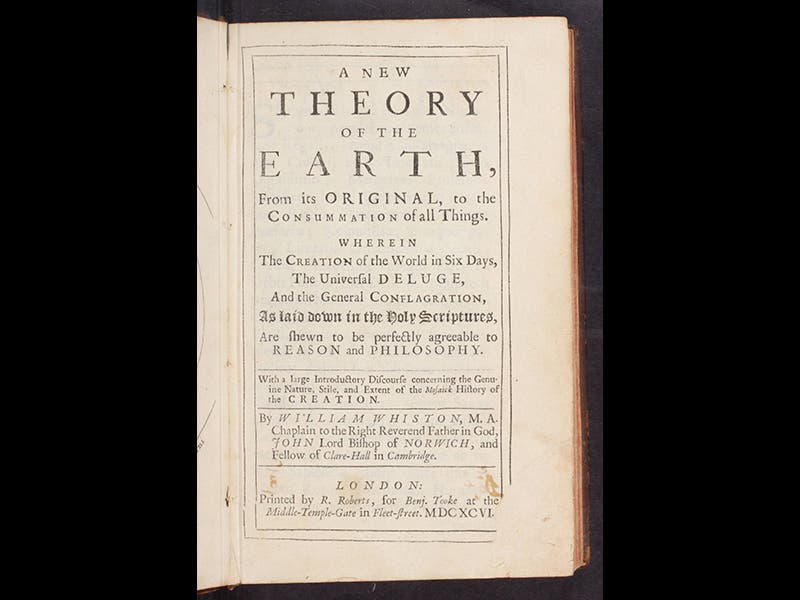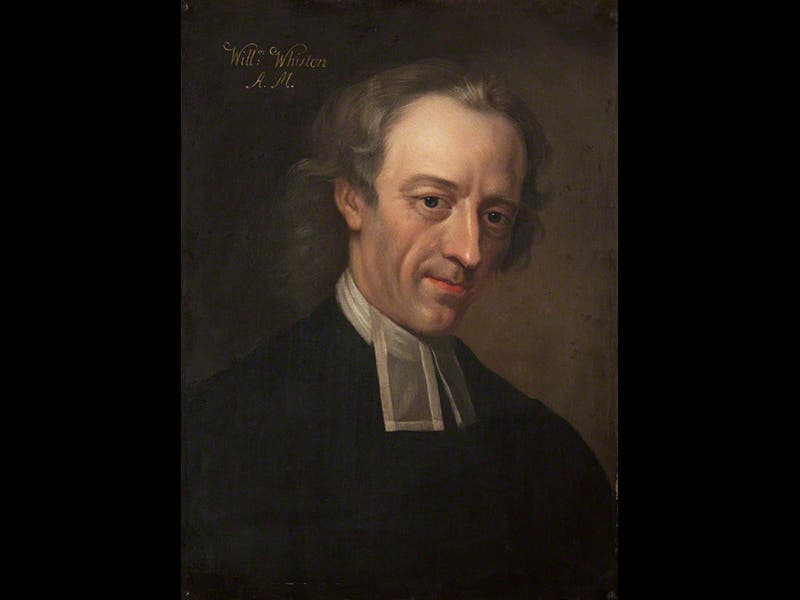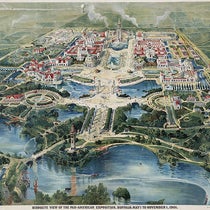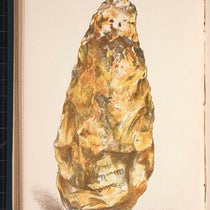Scientist of the Day - William Whiston
William Whiston, an English physicist, was born Dec. 9, 1667. Whiston was the third Lucasian Professor of Mathematics at Cambridge, succeeding Isaac Newton, who resigned in 1701 to become Master of the Mint. In 1696, Whiston published A New Theory of the Earth, which attempted to explain the origins of the great Flood of Noah (see title page above, third image). Whiston proposed that the Flood was caused by a comet, which passed very close to the earth (see the diagram of the comet’s orbit, first image above). The crust of the earth cracked open from the gravitational interaction (Whiston was a Newtonian), releasing the waters of the deep, and the watery tail of the comet caused the 40 days of rain (second image above).
Whiston's book was a Newtonian alternative to the Cartesian theory of the earth that had been proposed by Thomas Burnet in 1681, according to which the earth was a cooling star that dried out and cracked open, releasing the subterranean waters to cause the Flood. Whiston's New Theory had the approval of Isaac Newton, and led to his Lucasian Professorship, but in the ensuing years Whiston made public the fact that he was anti-Trinitarian in his religion, and because of this, he was removed from his faculty post in 1710 and ushered out of Cambridge, and Newton helped show him the door. The odd thing was, Newton was also an anti-Trinitarian, with views similar to Whiston's, only he kept his religious radicalism a secret. Newton never was much for putting himself on the line for his friends. Which, I suppose, is why he had very few friends.
There is a powerful portrait of Whiston in the National Portrait Gallery in London, a copy after one by Sarah Hoadly (fourth image above).
Dr. William B. Ashworth, Jr., Consultant for the History of Science, Linda Hall Library and Associate Professor, Department of History, University of Missouri-Kansas City

